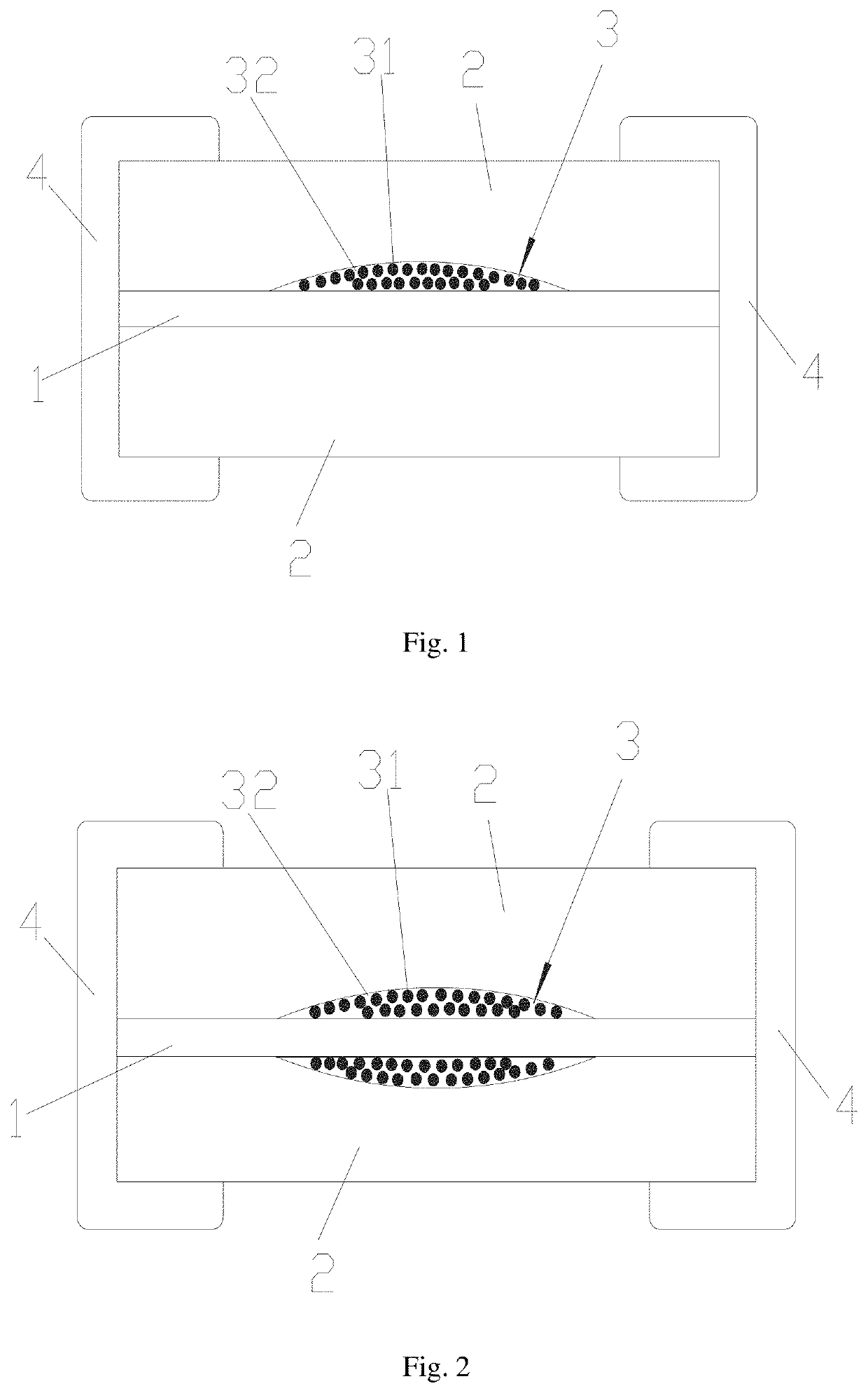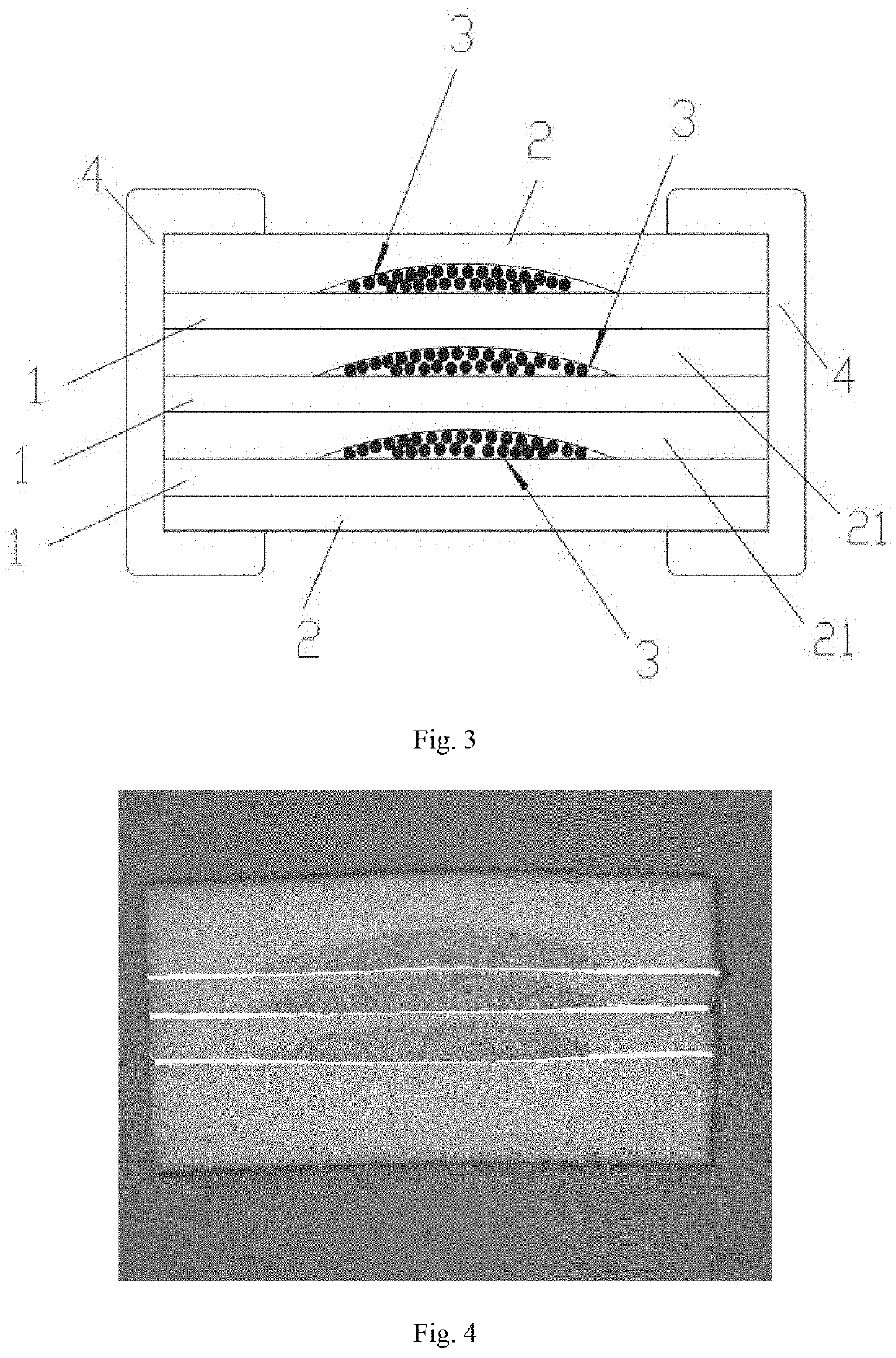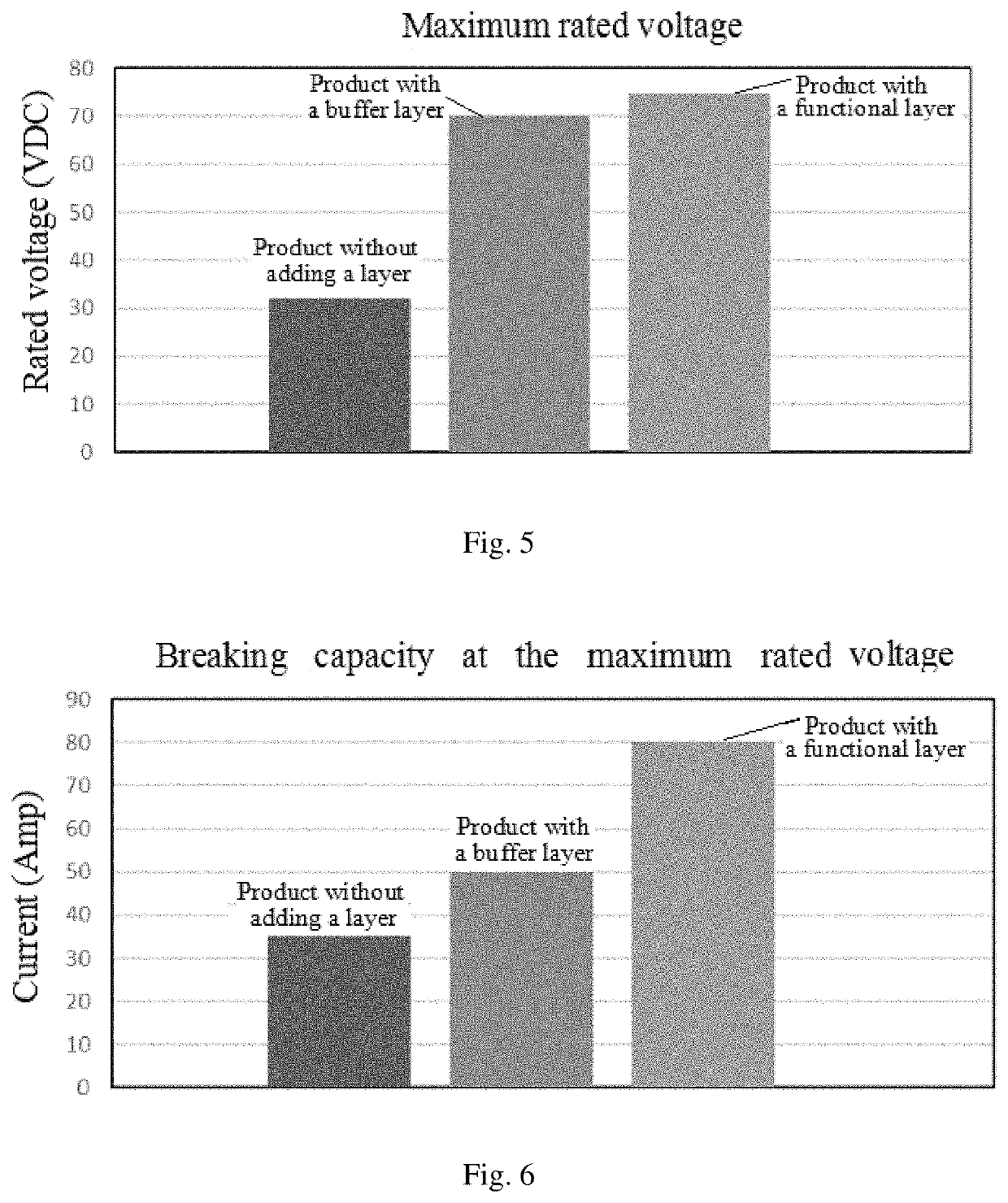Fuse and production method therefor
- Summary
- Abstract
- Description
- Claims
- Application Information
AI Technical Summary
Benefits of technology
Problems solved by technology
Method used
Image
Examples
embodiment 1
[0054]As shown in FIG. 1, the present disclosure provide a fuse comprising insulating layers 2 and a fuse element 1, the insulating layers comprise an upper insulating layer and a lower insulating layer, the fuse element 1 is arranged between the upper insulating layer and the lower insulating layer, the insulating layers 2 are provided with terminal electrodes 4 electrically connected with the fuse element 1 thereon, and the fuse further comprises a functional layer 3 provided between the fuse element 1 and one of the insulating layers 2, the functional layer 3 comprises a substrate 32 and an arc extinguishing material 31 uniformly or substantially uniformly distributed in the substrate 32, the arc extinguishing material 31 is a glass body and / or ceramic body having sealed cavities, and the substrate 32 comprises low temperature co-fired ceramic powder, aerosol silicon oxide, silicon oxide, inert resin, phosphoric acid and phosphate ester polyester, and the content of the arc extin...
embodiment 2
[0067]As shown in FIG. 2, this embodiment provides a fuse, differing from Embodiment 1 in that the functional layer 3 in the fuse comprises two functional layers 3 arranged above the fuse element 1 and below the fuse element 1, and the functional layer 3 is in contact with the corresponding fuse element 1. The production method for the corresponding fuse is different from the production method of Embodiment 1 in step S5, which is specifically as follows:
[0068]S5, a layer of functional layer slurry layer was printed above the slurry layer of glass-ceramic through steel screen printing, and a layer of fuse element layer slurry having a layer of UV-curable binder was printed above the functional slurry layer using screen printing, wherein the silver content of the fuse element layer slurry was between 55-85%, and a layer of functional layer slurry layer was printed above the fuse element layer slurry through steel screen printing, and a layer of slurry layer of glass-ceramic was coated...
embodiment 3
[0069]As shown in FIGS. 3-4, this embodiment provides a fuse, differing from Embodiment 1 in that the fuse element 1 comprises three layers of fuse elements 1 in sequence, a functional layer 3 is provided above each layer of fuse element 1, and the functional layer 3 is in contact with the corresponding fuse element 1, and adjacent fuse elements 1 are separated by insulating materials, namely interlayer 21.
[0070]The production method for a fuse in this embodiment, comprises following steps:
[0071]S1, glass-ceramic slurry was prepared by low temperature co-fired ceramic powder and binder, wherein the solid content in the glass-ceramic slurry was controlled to be 71.43 wt %, and the viscosity was 2.2 kcps after sufficient stirring;
[0072]S2, aerosol silicon oxide, silicon oxide, inert resin, phosphoric acid and phosphate ester polyester were added to the glass-ceramic slurry, and fully stirred and grinded to prepare a pre-slurry of functional layer; the total amount of aerosol silicon o...
PUM
 Login to View More
Login to View More Abstract
Description
Claims
Application Information
 Login to View More
Login to View More - R&D
- Intellectual Property
- Life Sciences
- Materials
- Tech Scout
- Unparalleled Data Quality
- Higher Quality Content
- 60% Fewer Hallucinations
Browse by: Latest US Patents, China's latest patents, Technical Efficacy Thesaurus, Application Domain, Technology Topic, Popular Technical Reports.
© 2025 PatSnap. All rights reserved.Legal|Privacy policy|Modern Slavery Act Transparency Statement|Sitemap|About US| Contact US: help@patsnap.com



